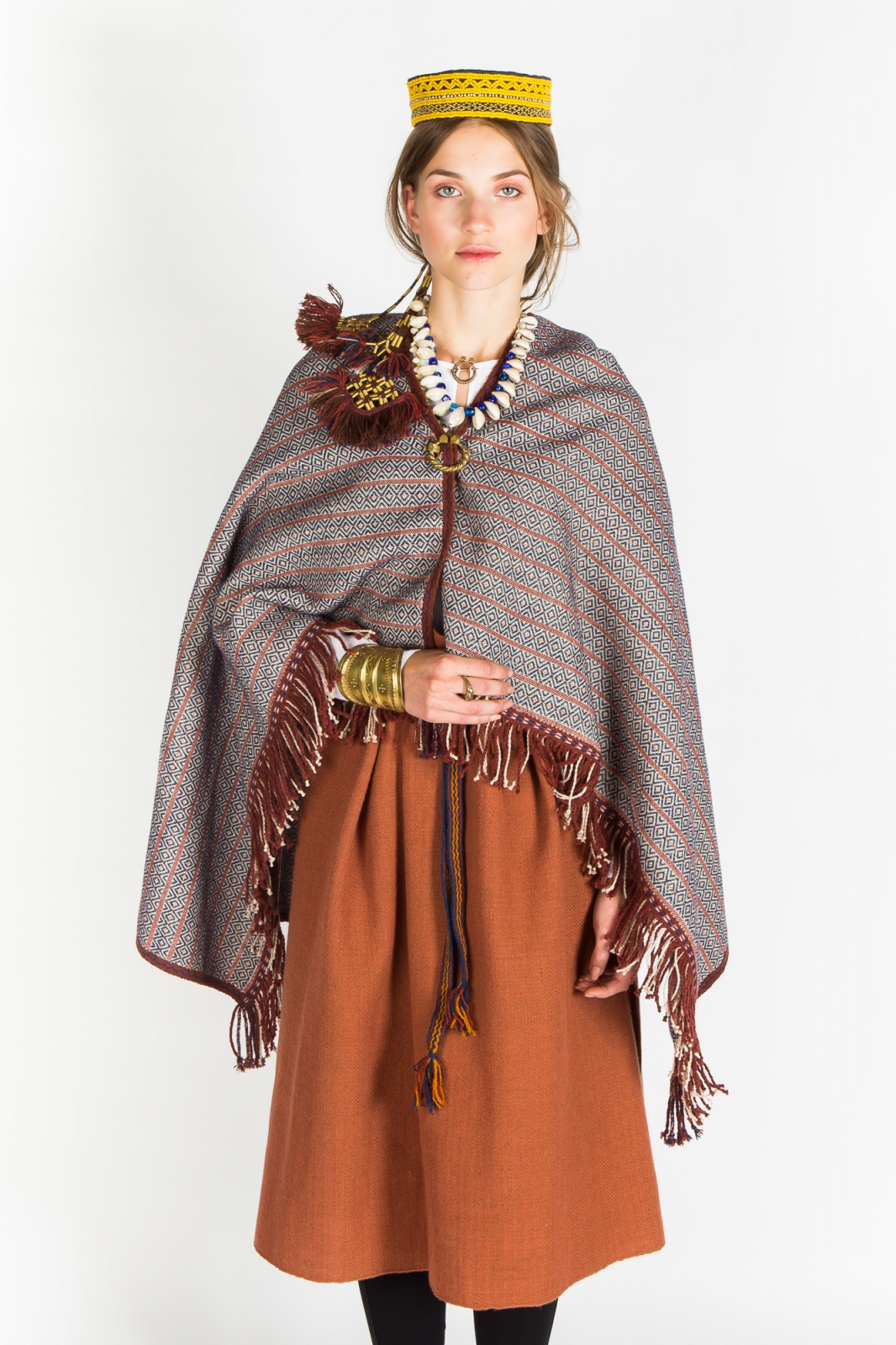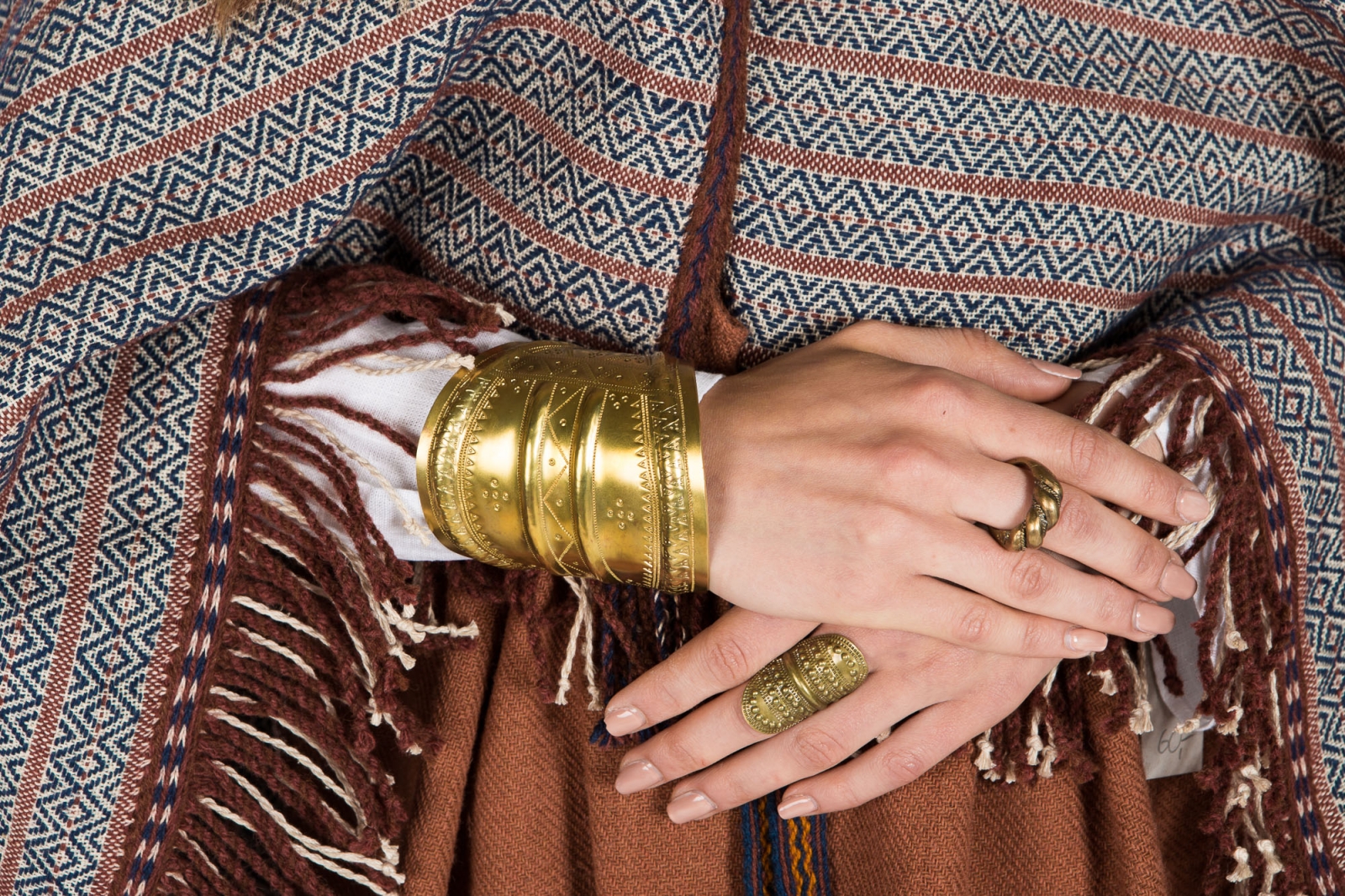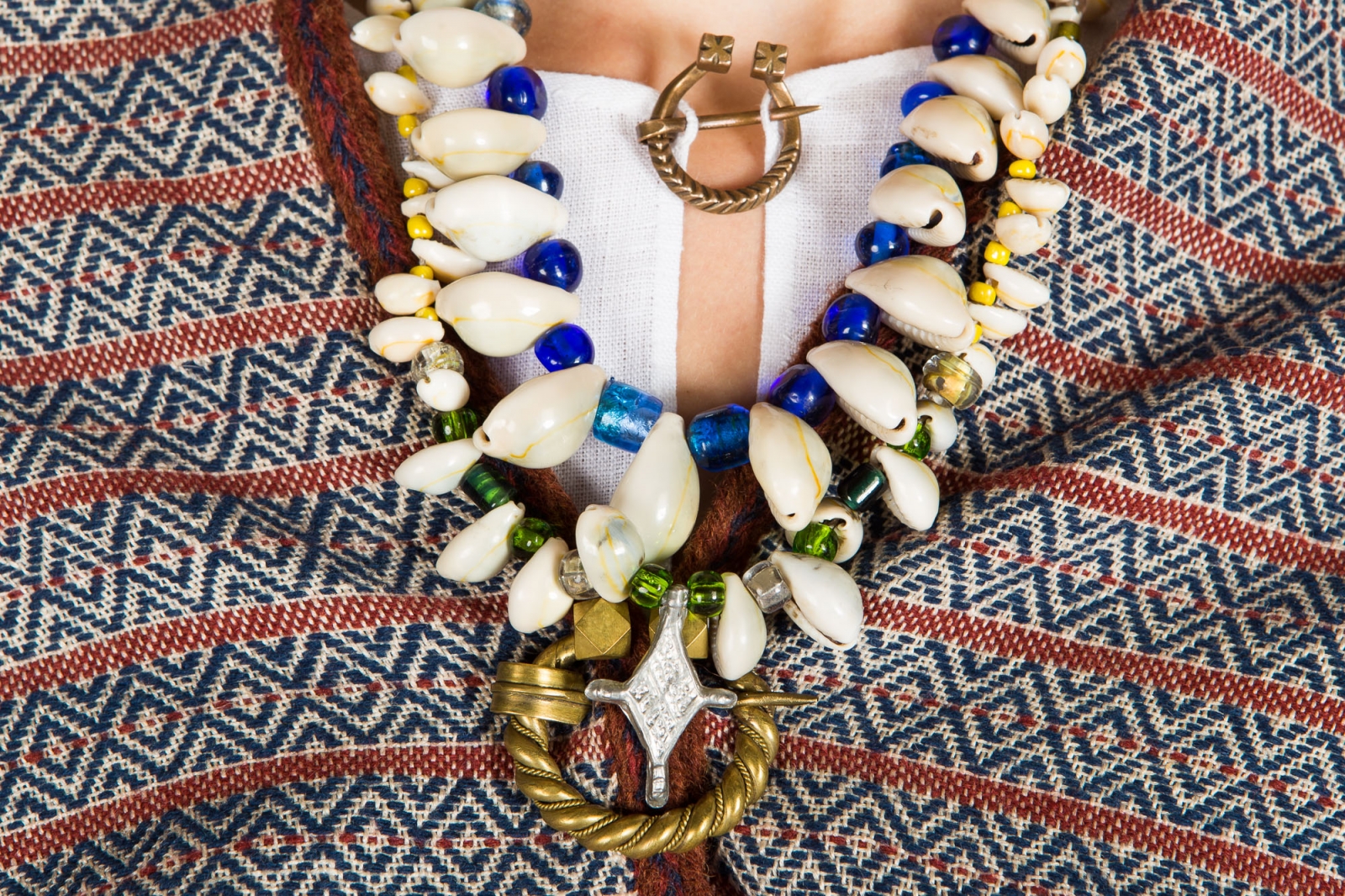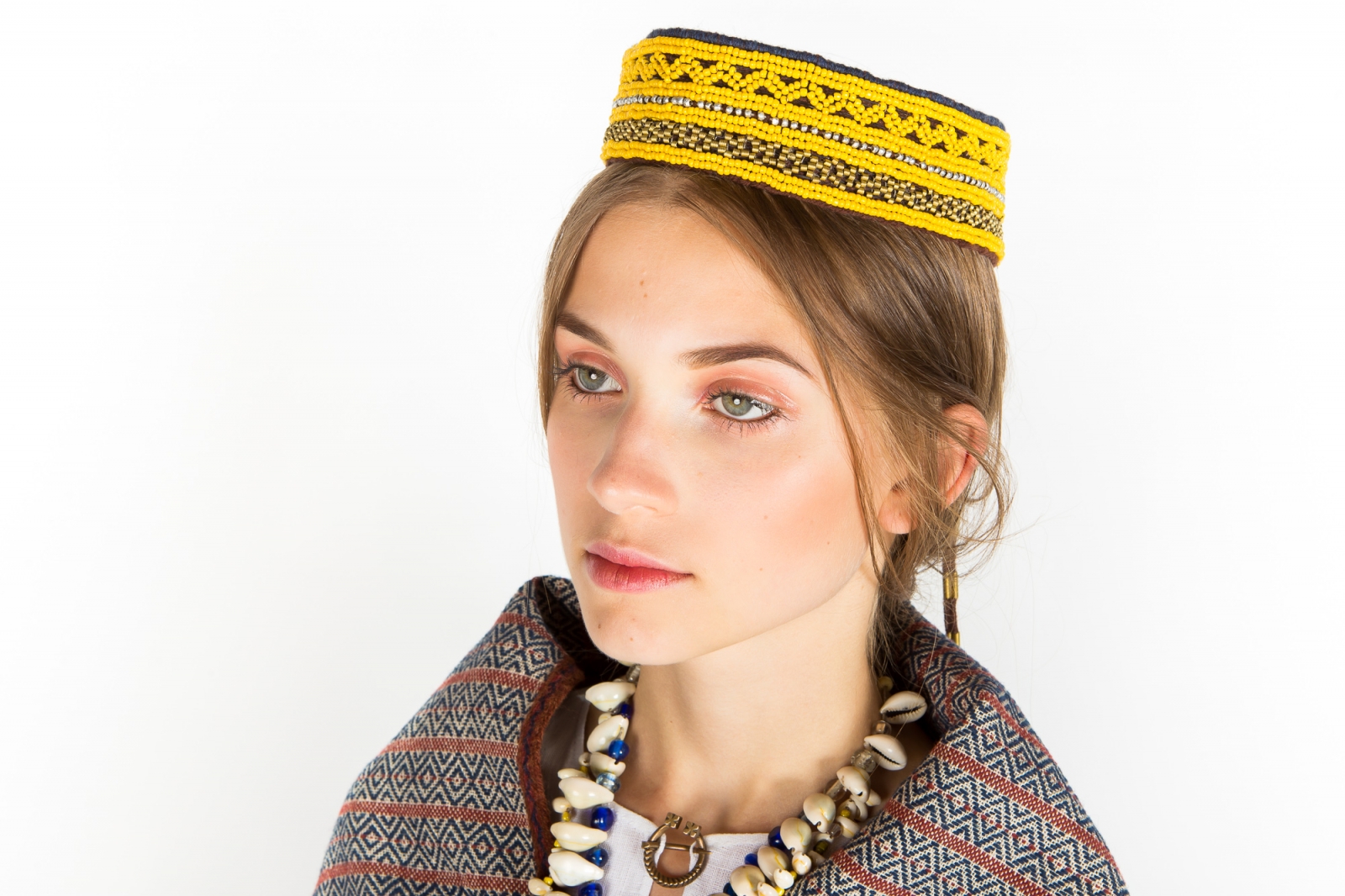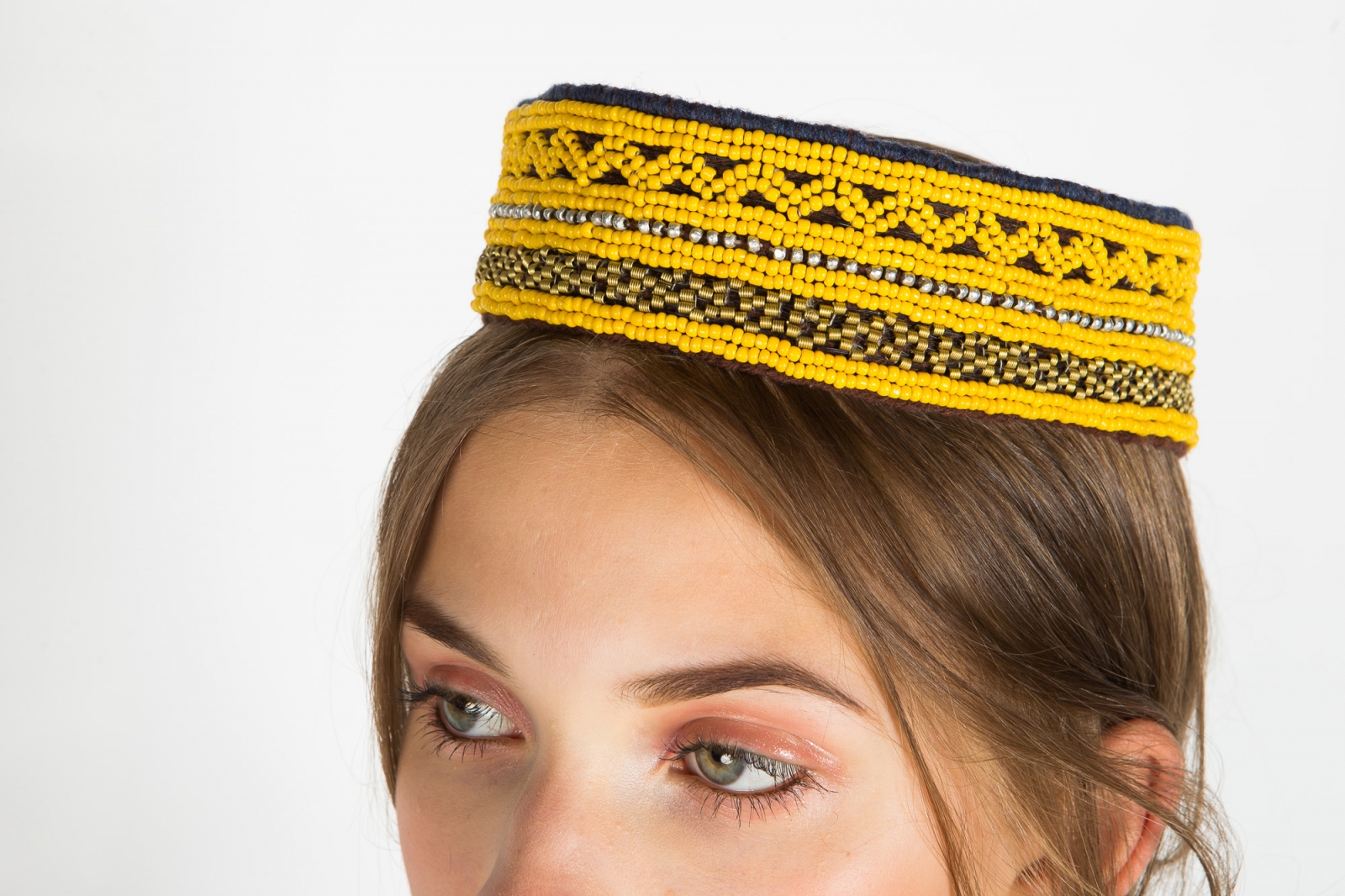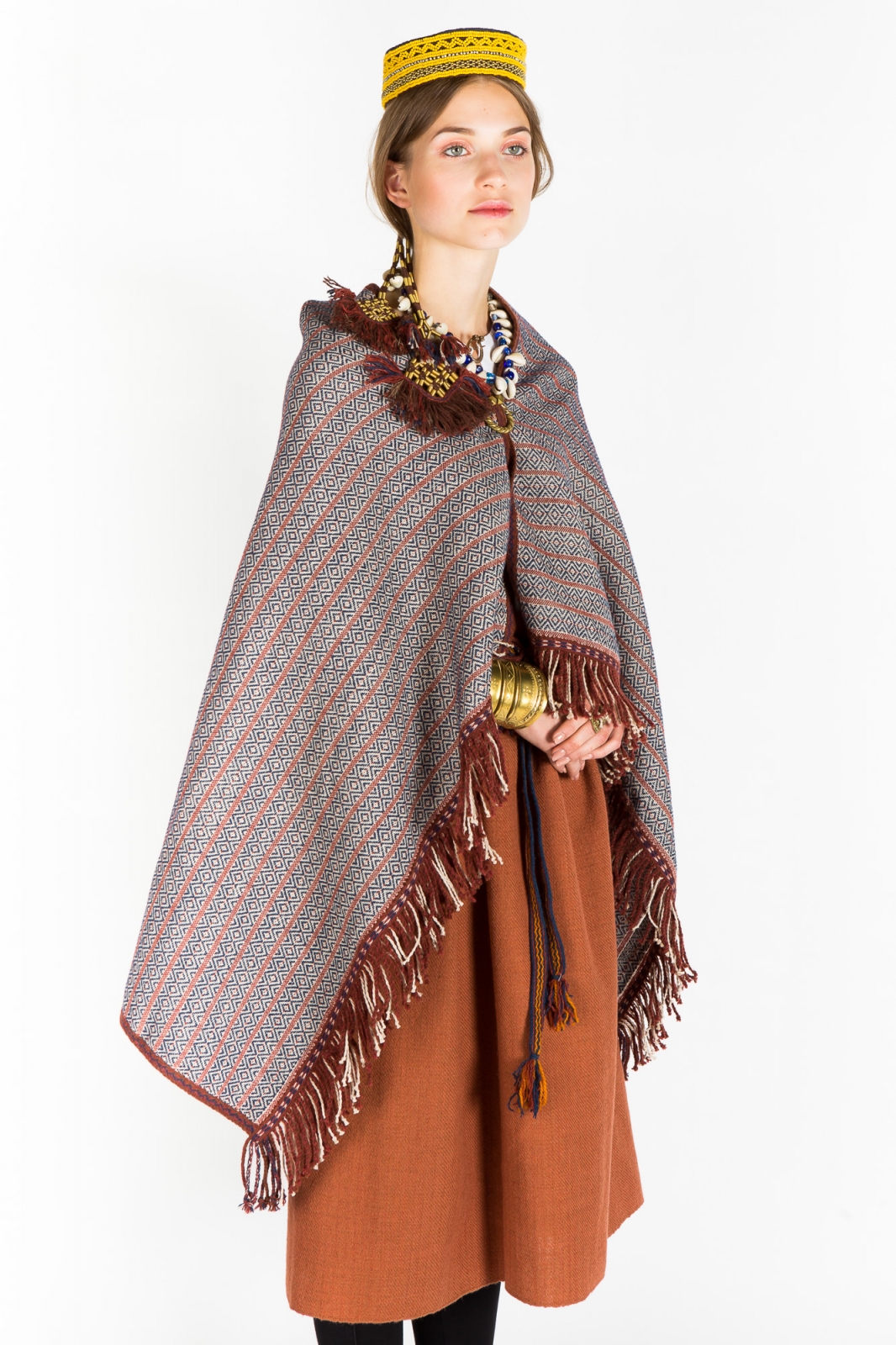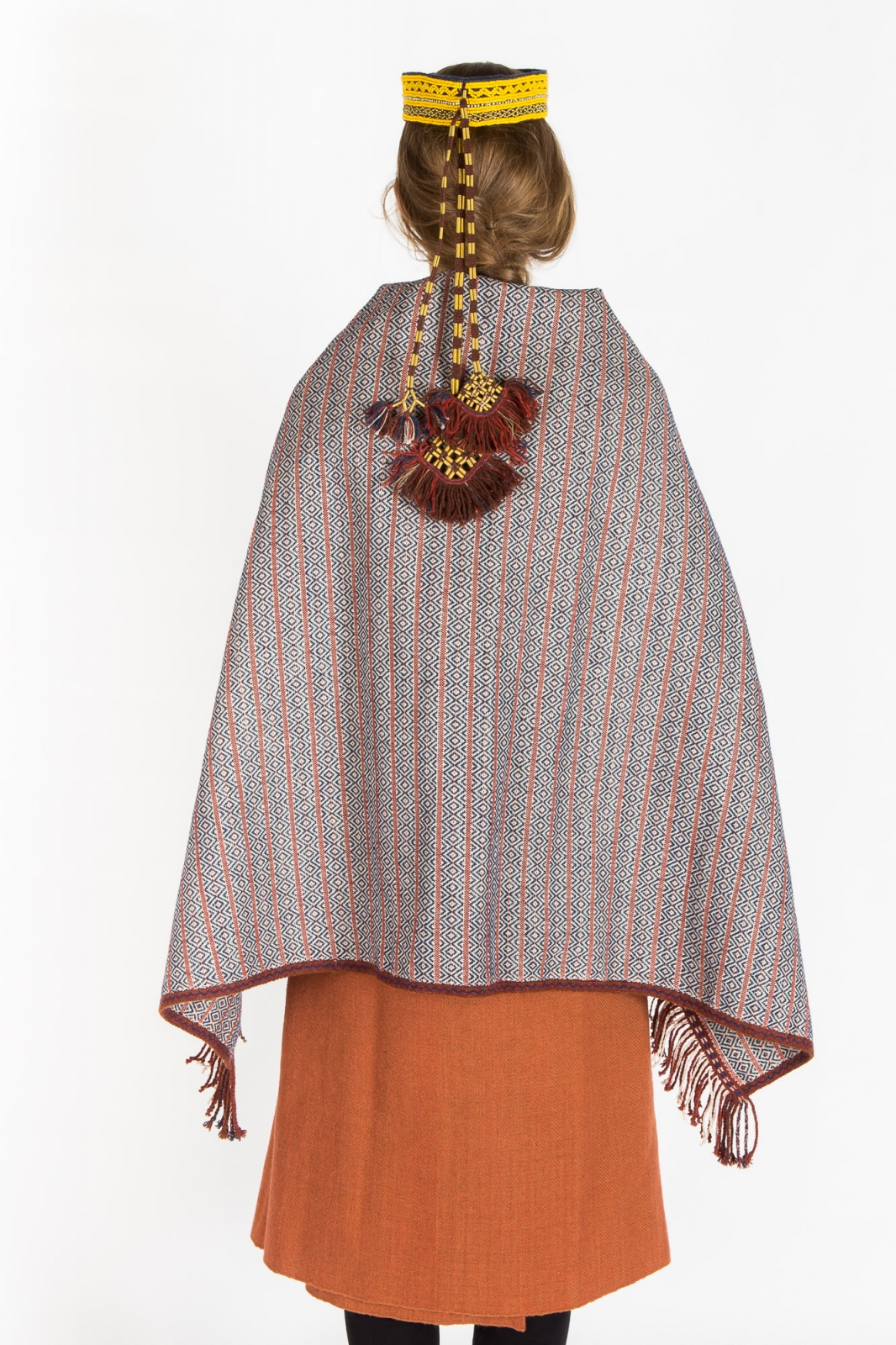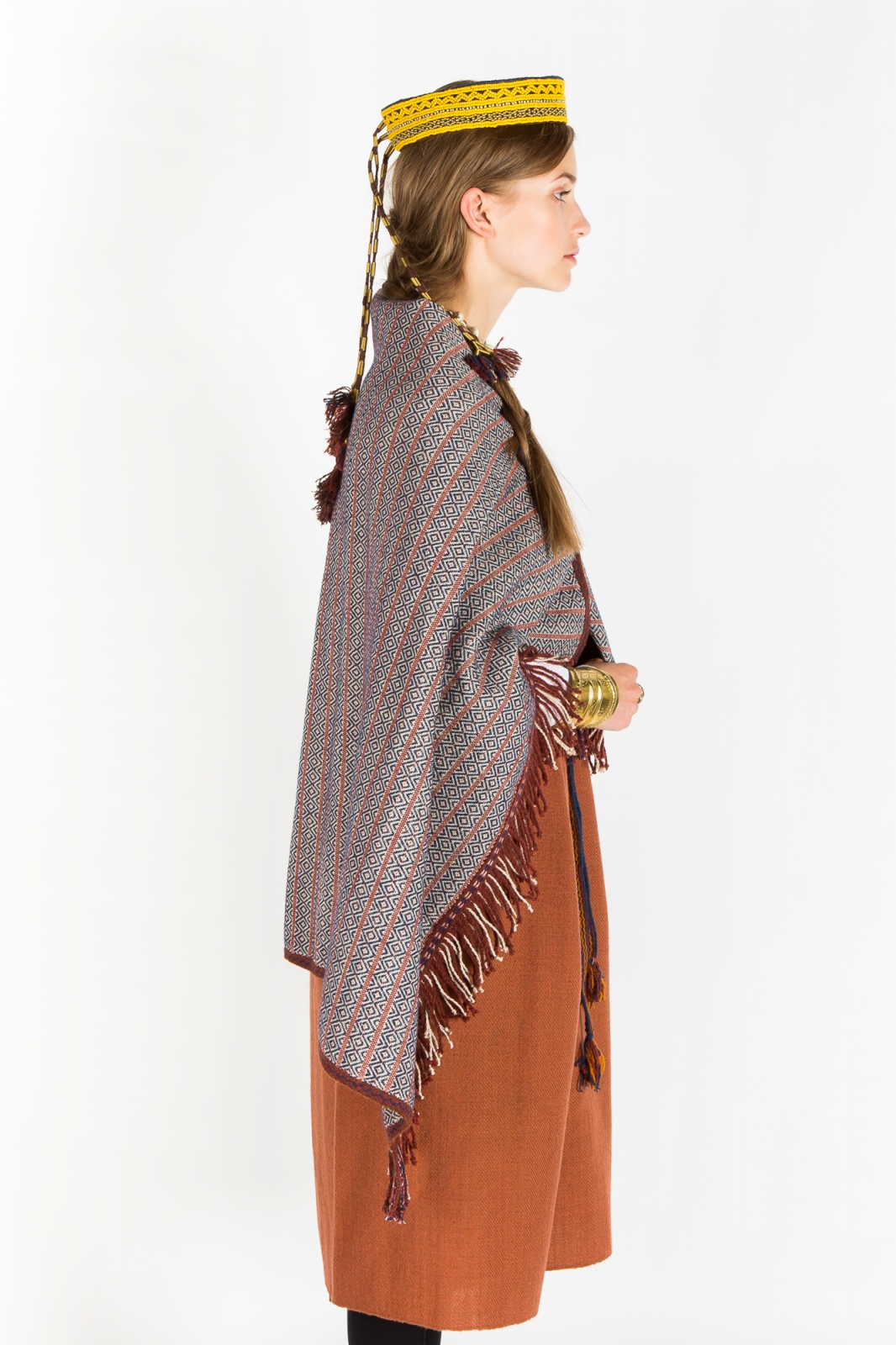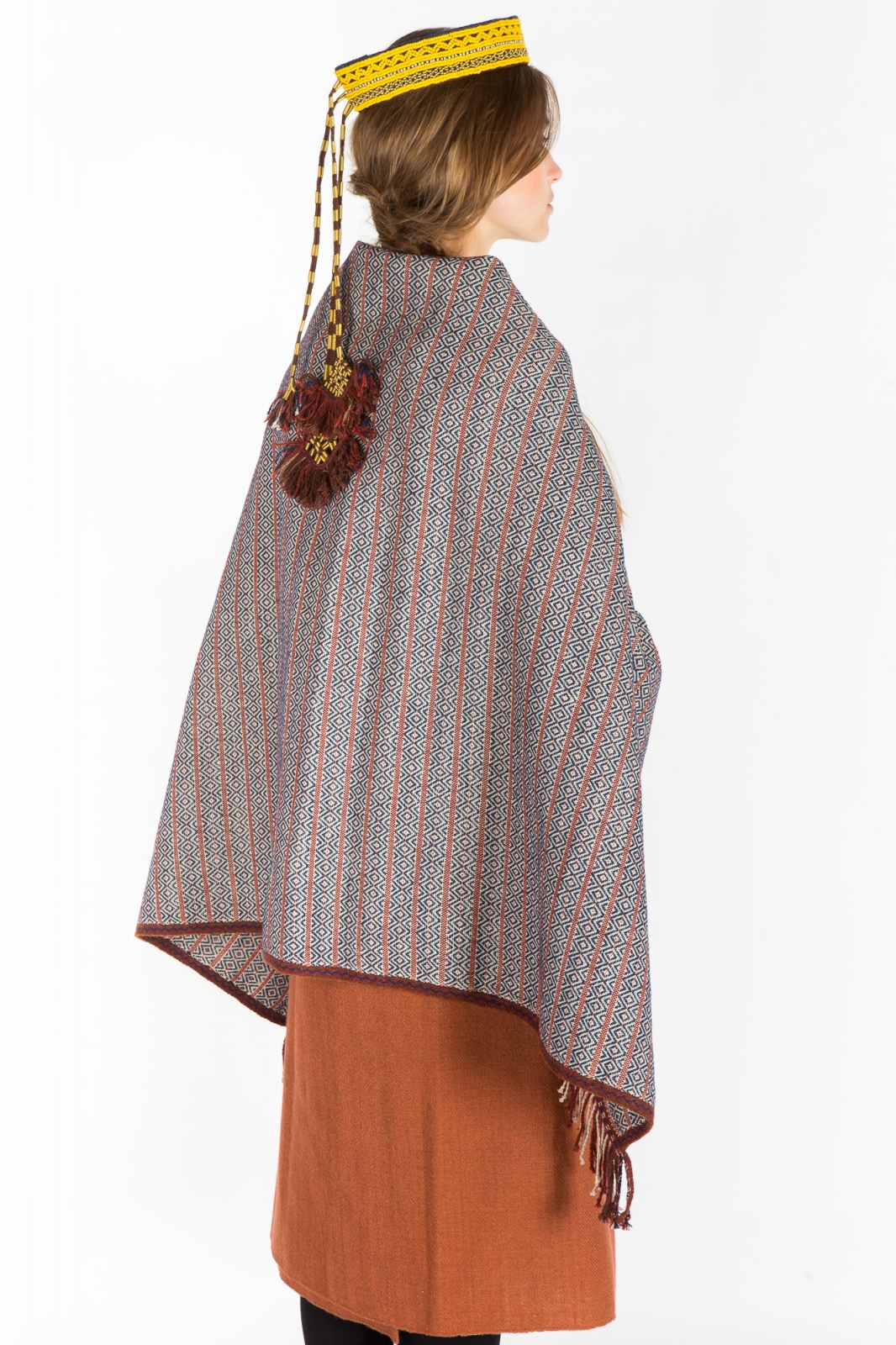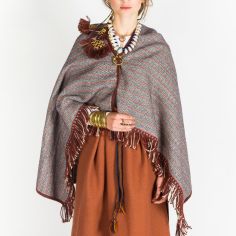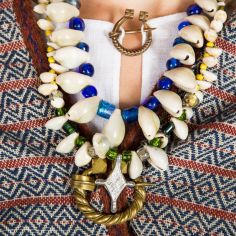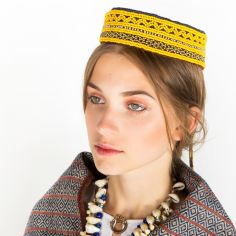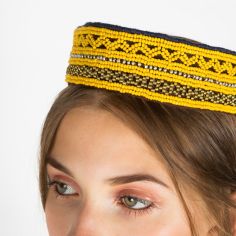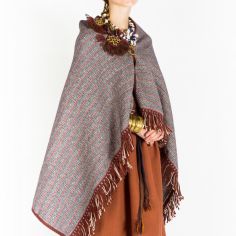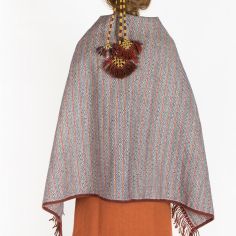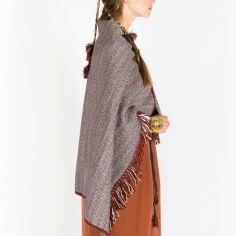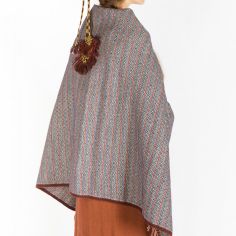Reconstruction of the 14th century Latgallian woman's costume
Brief information
In the 14th century, Latgallian costumes underwent a great change. The dark blue woolen shawls with the interwoven bronze ring pattern were replaced by shoulder blankets made of wool and linen – either checkered or patterned. The shapes and ornaments of the armbands worn also changed.
Small yellow glass paste beads, tiny bronze spirals and tin-lead rosettes were used for decoration of both shoulder shawls and headdresses (vainags).
Metal crowns were replaced by those made of cloth, to which ornaments and bands were sewn. Pendants were attached to the back of the crown – this continued to follow one of the ancient traditions. These pendants were made of dyed wool threads and small bronze spirals. At the ends of the pendants there hung spiral shaped tassels. The typical metal neck rings characteristic in the past, gradually disappeared and were replaced by imported glass beads and cowrie shell necklaces.
History and Origin
Archaeological costumes are garments that have been reconstructed based on materials found in excavations – from fragments of cloth, decorations and adornment. Archaeological excavations unearthing evidence dating back to the 16th century, give us an understanding of what local populations – the Curonians, Semigallians, Selonians, Latgallians, as well as Livs and Vends, wore.
The excavated materials have been preserved from the long standing tradition of dressing for the journey into the 'afterlife' whereby our Ancestors dressed in their best – rich, festive and adorned clothing. The oldest materials from which we are able to reconstruct archeological costumes, date back to the 7th century. In the centuries following, it appears each ethnic group developed its own distinct traditions for costume making. Over time newer traditions replaced the material culture of those ancient people – however, these newer traditions bridged traditional materials with the latest and more modern trends of that time. This eventually led to the 19th century Latvian traditional national costume that we all know today. This costume looks different, not only in its appearance/style, but its technical composition – when compared to its predecessors.
Archaeological costumes are mostly dark blue in color and are characterized by the use of metal decorations, the style of which varies between each tribe. Part of the ancient tradition of costume-making survived throughout the ages, so that despite changes along the way, there has remained an unaltered form reflected through all costumes.
